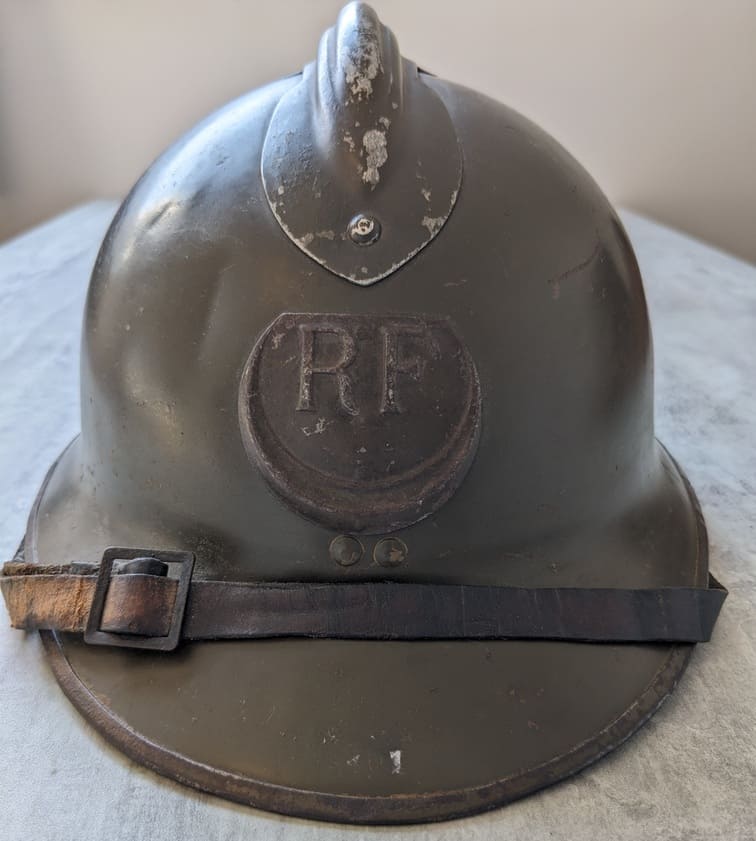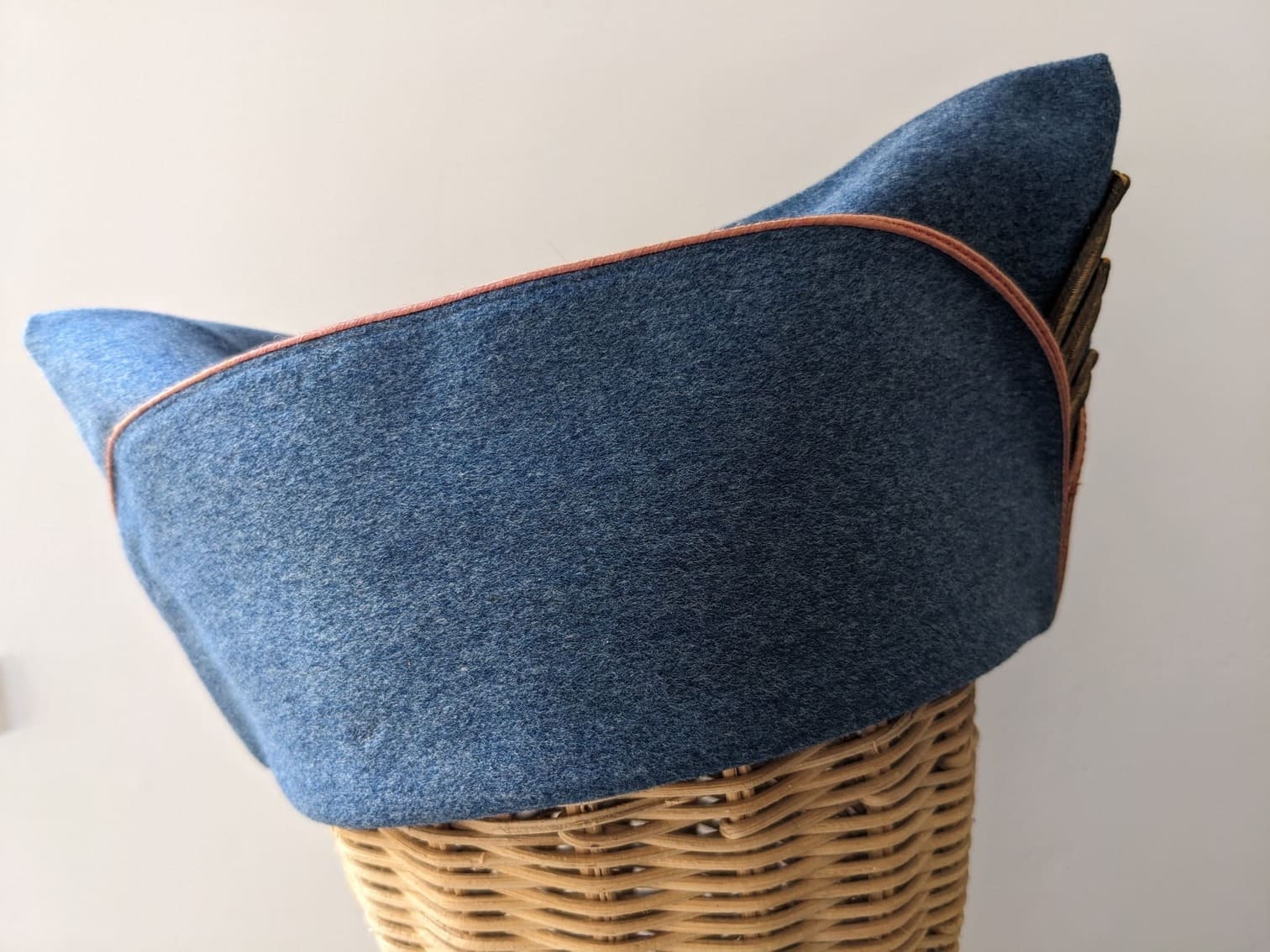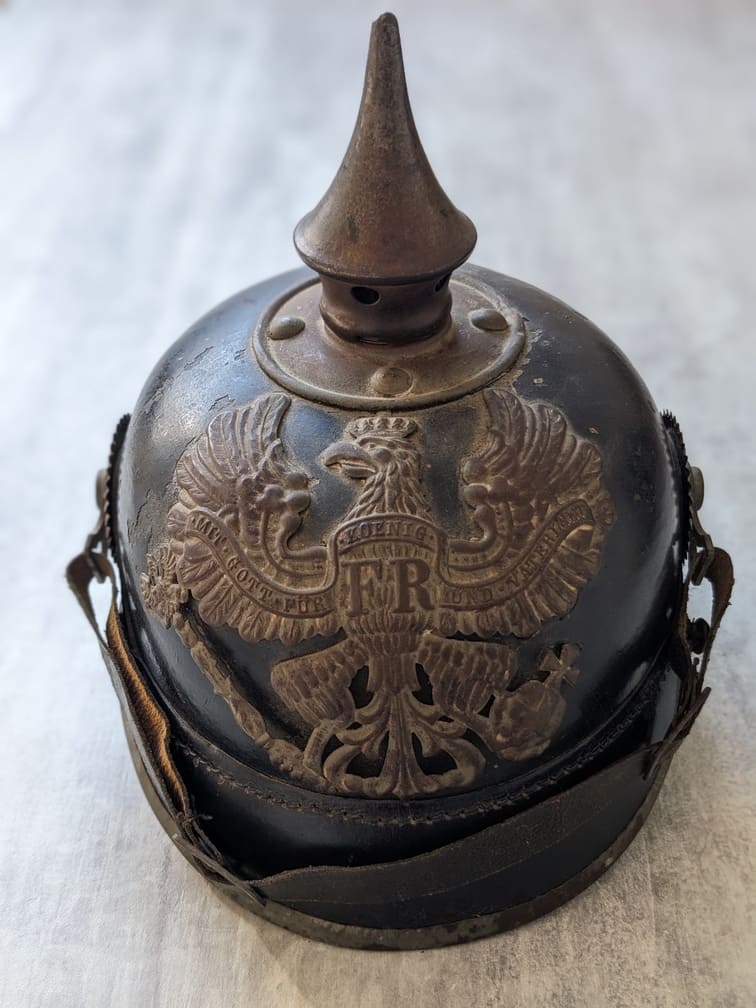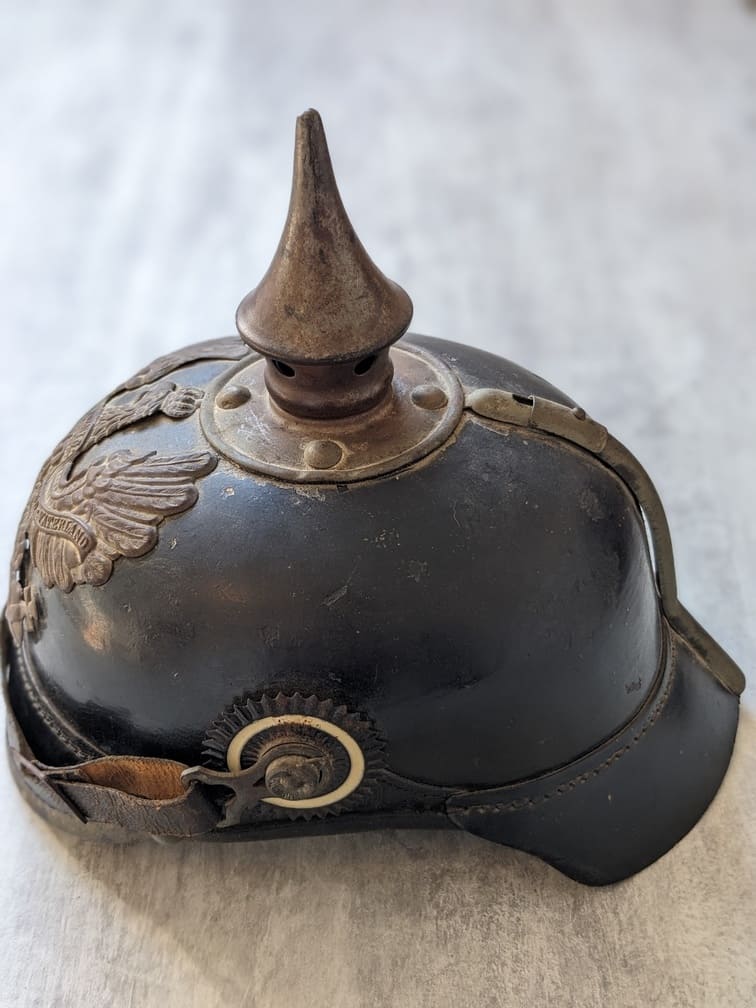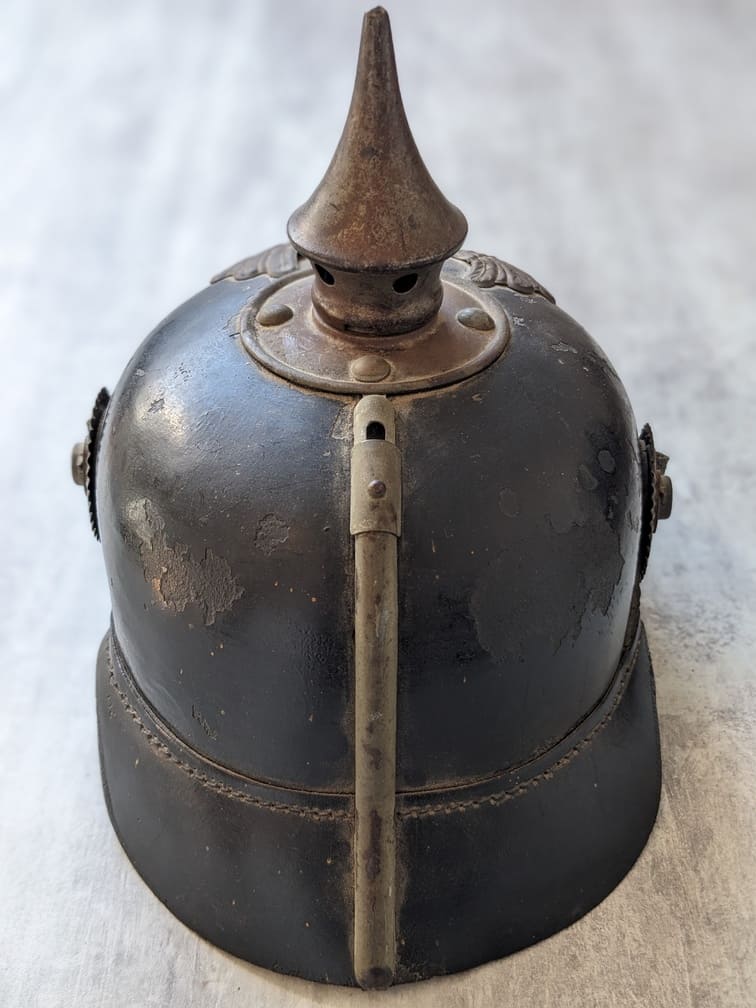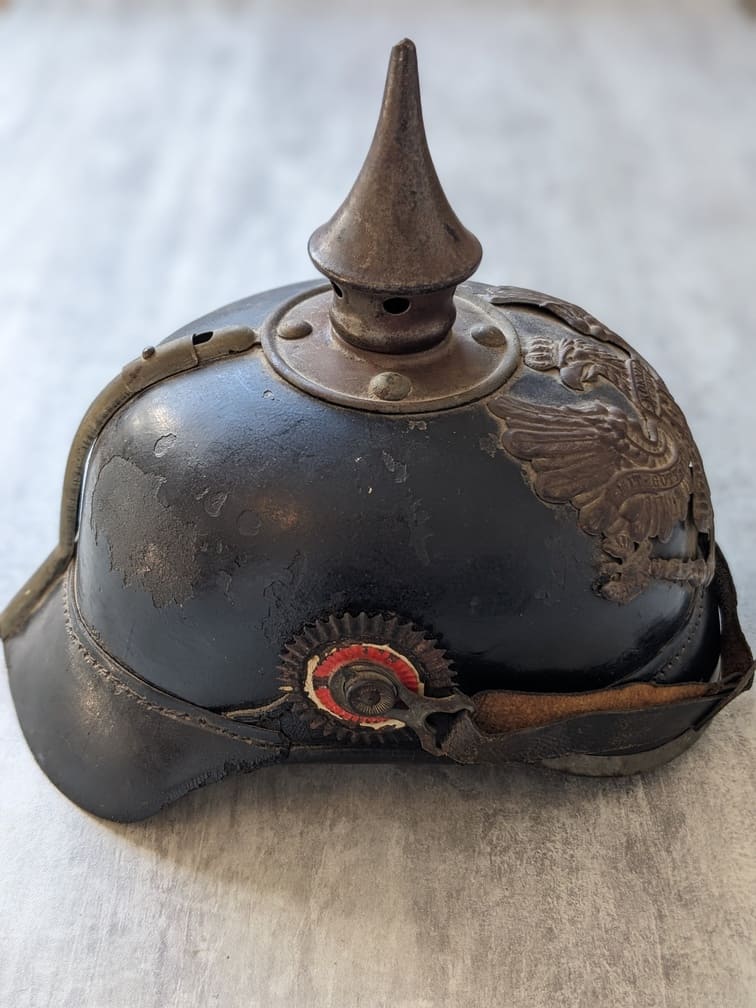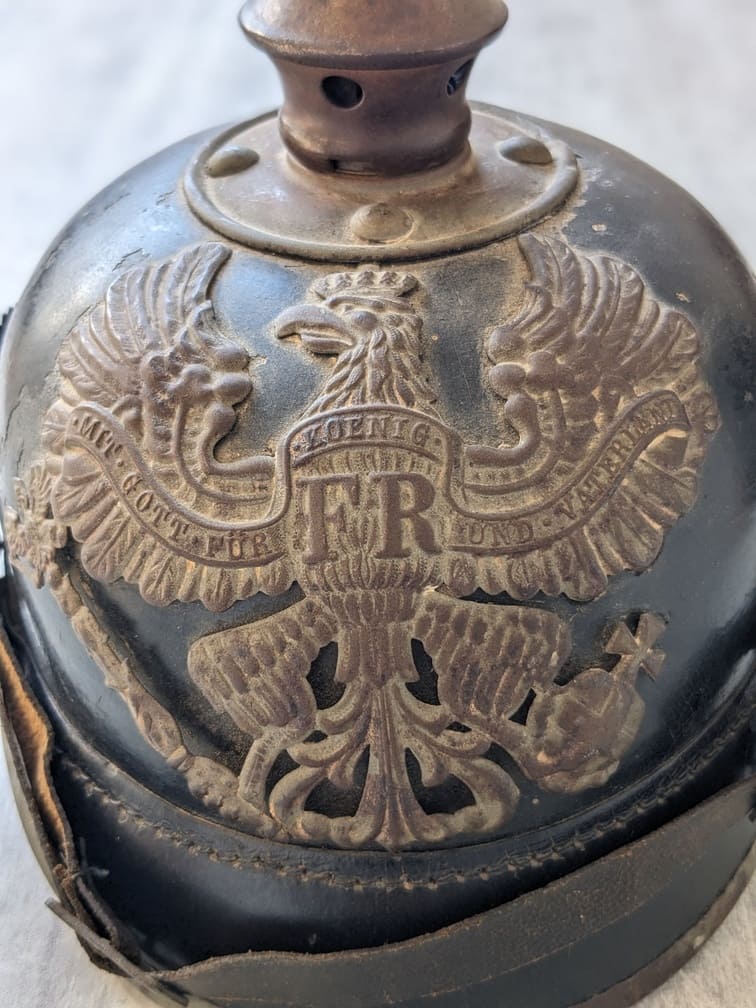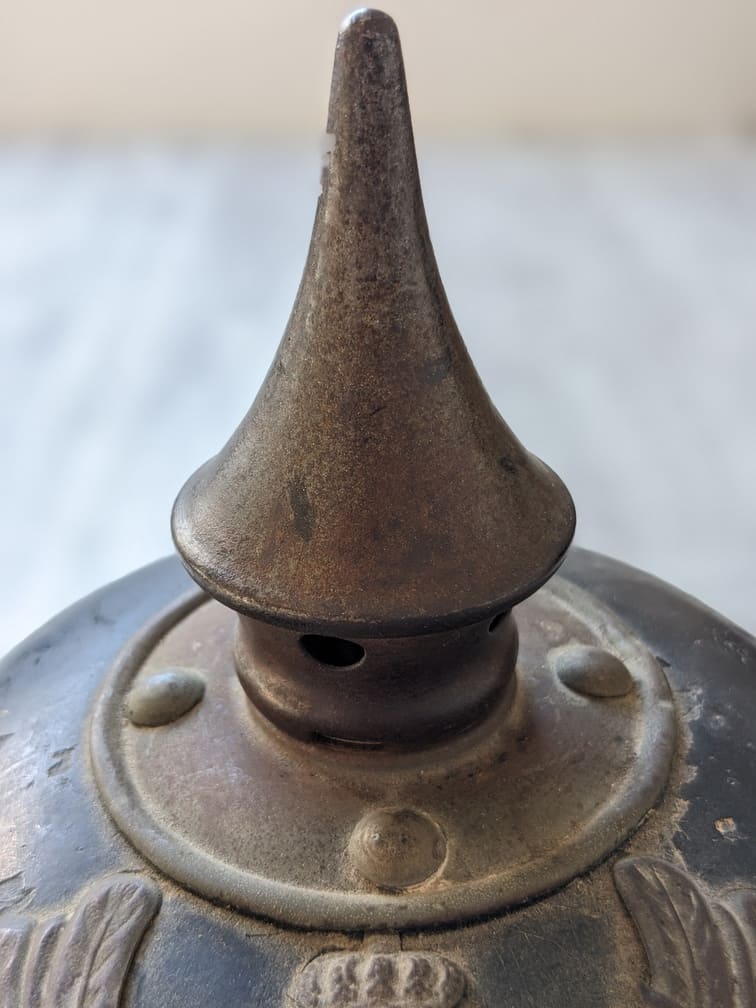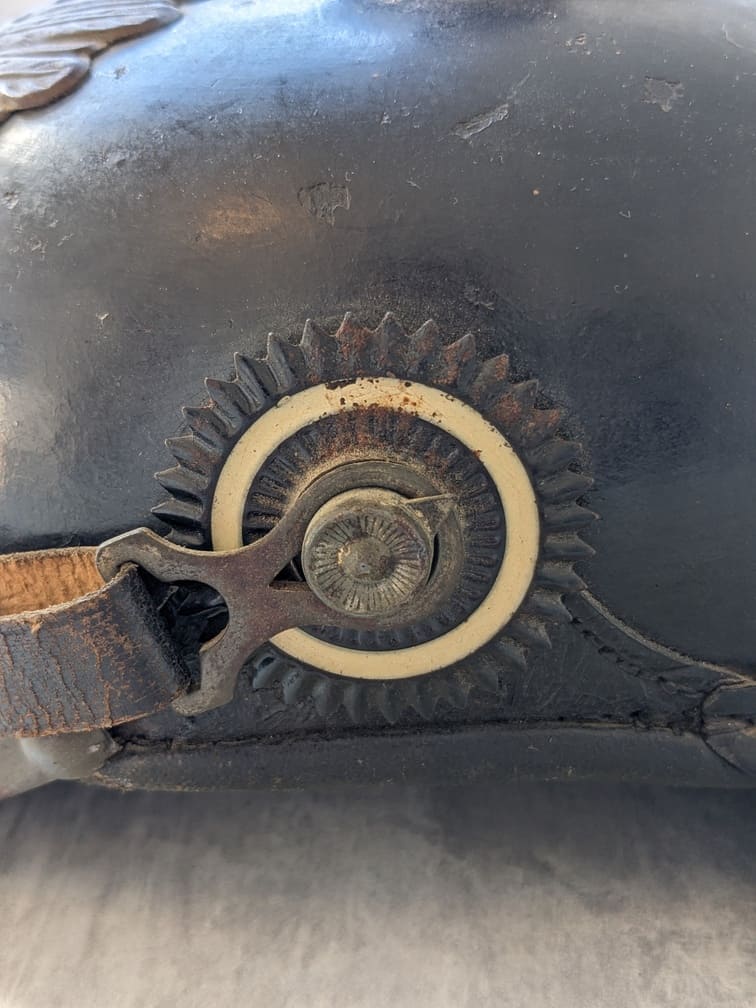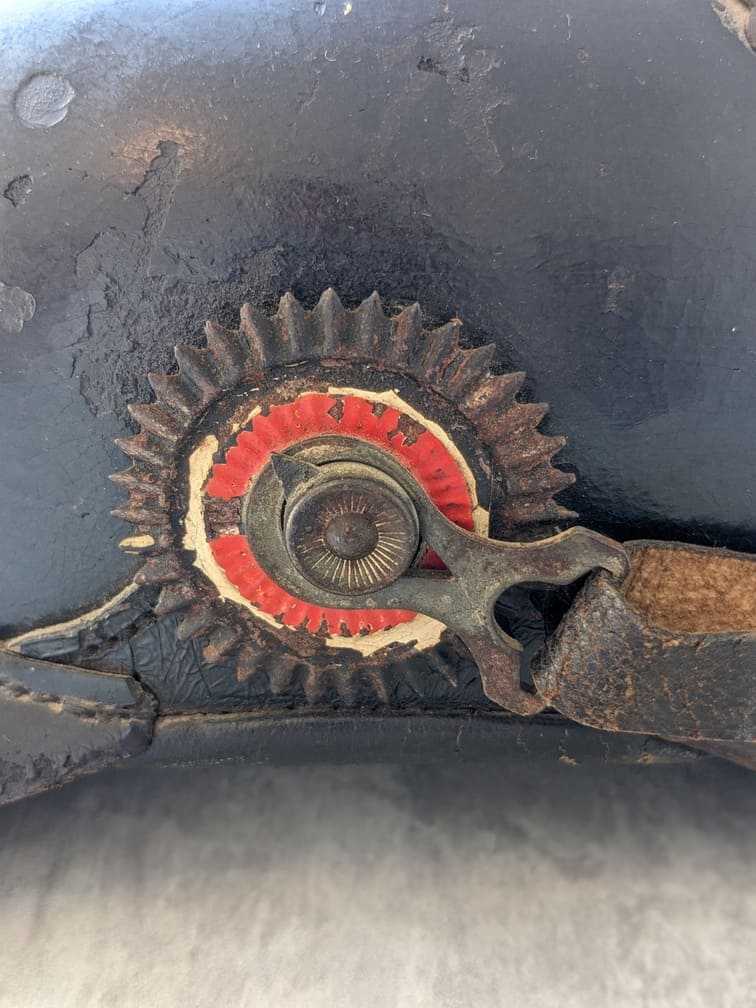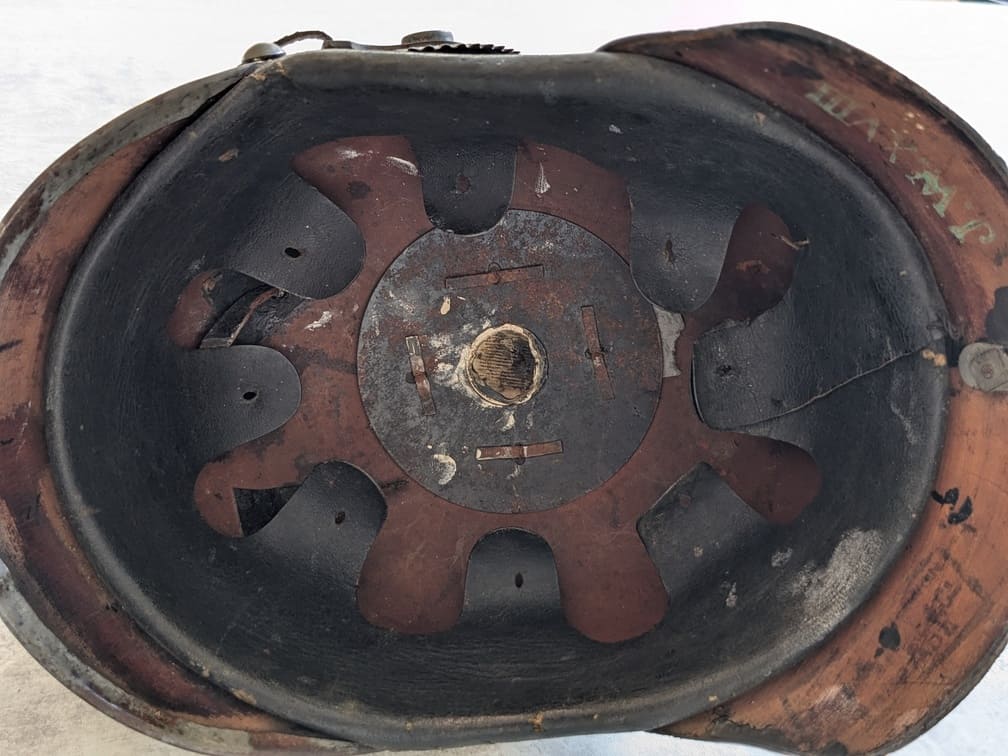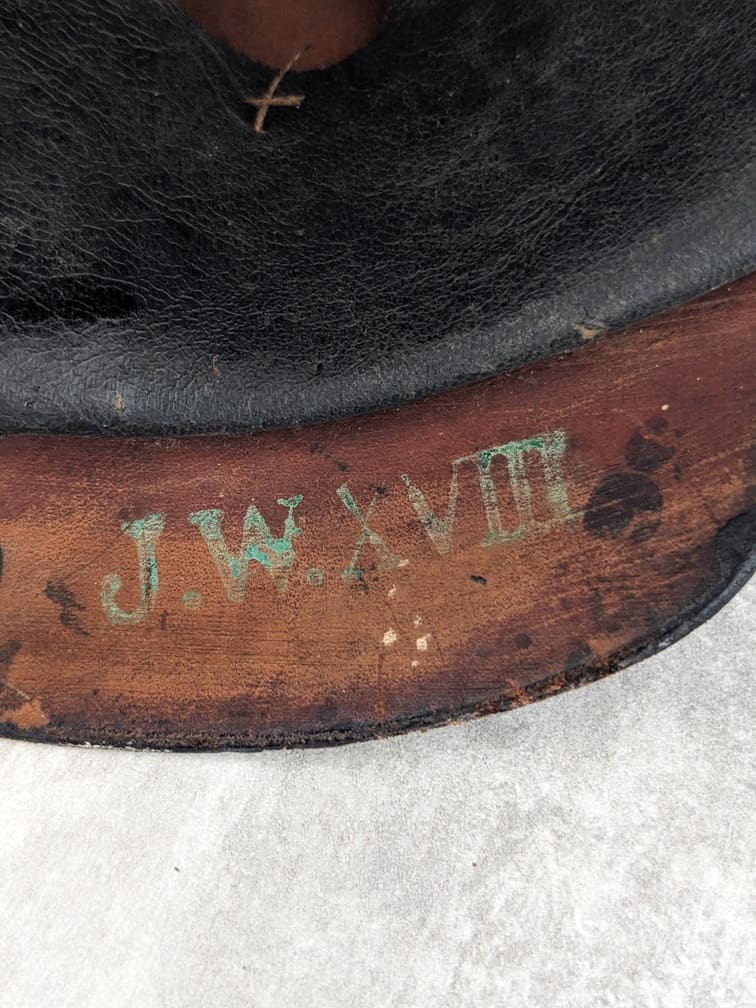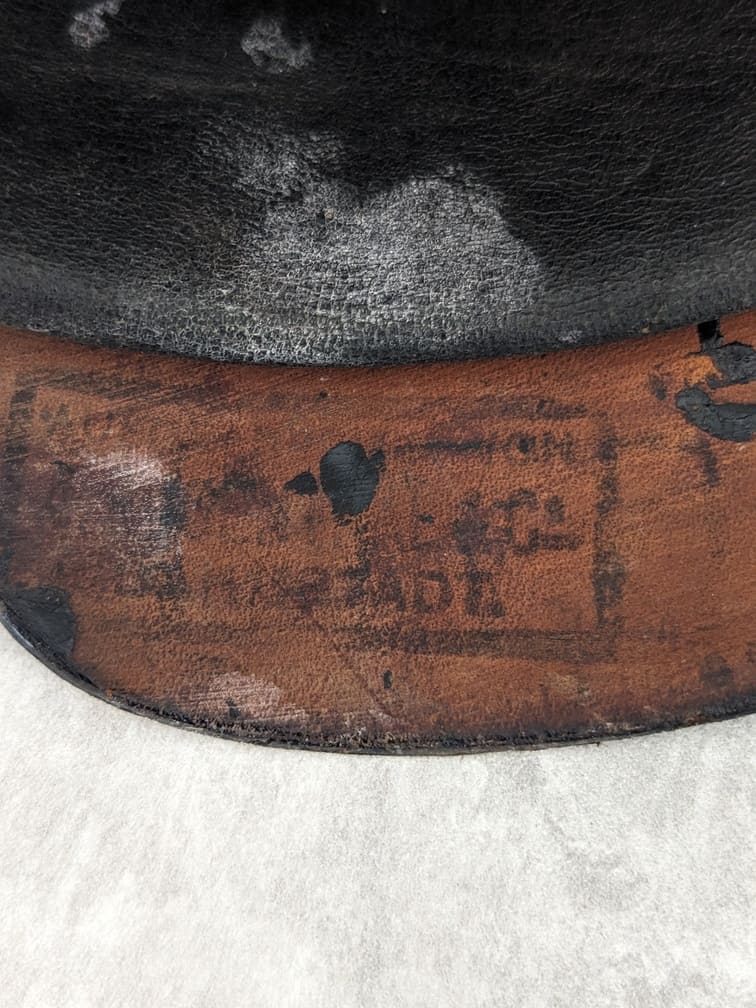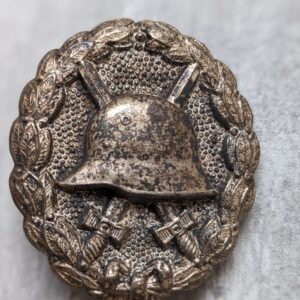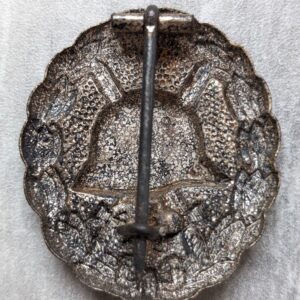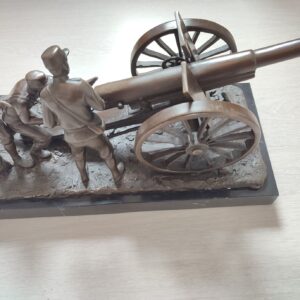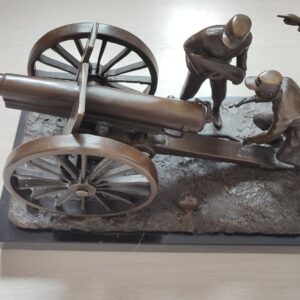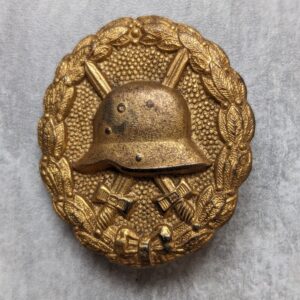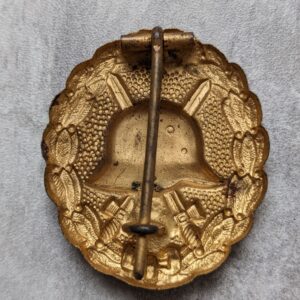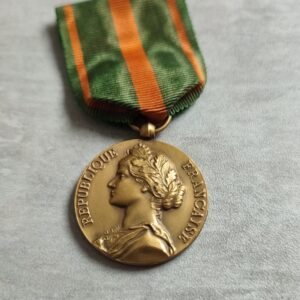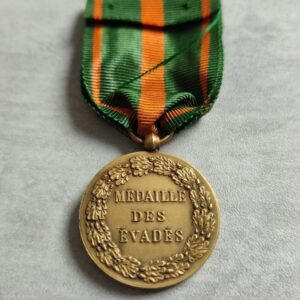Prussian “Pickelhaube” Spiked Helmet, World War I
Prussian spiked helmet, model 1915, made of black leather with grey iron fittings.
The helmet is complete with its original chinstrap and cockades: the national colors black-white-red on the right and the Prussian colors black-white-black on the left.
The spike on the top of the helmet is detachable in accordance with the 1915 model. The helmet has not been re-punched.
There are stamps inside the shell, including one from the XVIII Corps repair workshop “JW XVIII.”
The liner is made of black leather with eight “teeth”.
This is a beautiful, homogeneous, original helmet, in good condition.
The 1915 model marks an important change compared to previous versions of the Pickelhaube, which were primarily made of hardened leather. During World War I, the need for mass production and the constraints of material shortages pushed the German army to simplify manufacturing.
The 1915 model uses lower-quality leather compared to earlier models, and in some cases, metal to make it more durable and cheaper to produce.
One of the main differences of the 1915 model is that the spike on the top of the helmet is detachable. This allowed soldiers to easily remove the spike when in combat or trench situations. The spike, which no longer had any real protective function, could become a disadvantage by getting caught on obstacles.
Making the spike removable was a pragmatic response to the demands of trench warfare, where mobility and discretion were more important than military appearance.
The Pickelhaube model 1915 introduced chinstraps and plates made of matte grey metal or galvanized iron to avoid light reflections, an important feature to reduce visibility on the battlefield. These elements replaced the bright brass versions of earlier models, which were too visible for battlefield conditions.
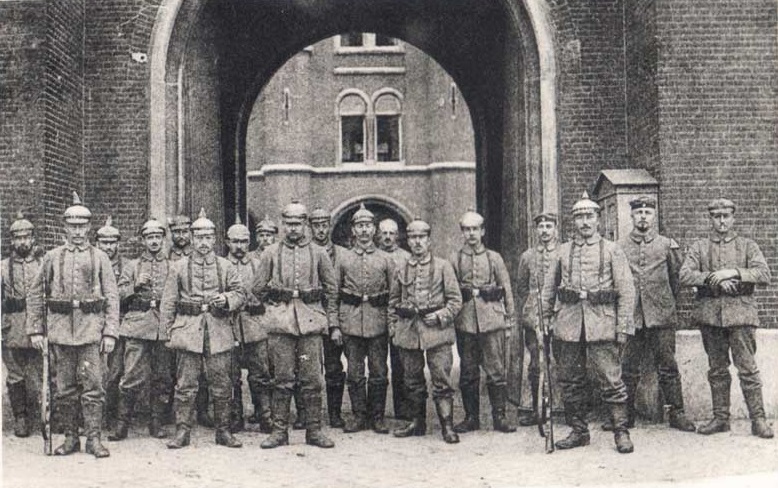
Out of stock
